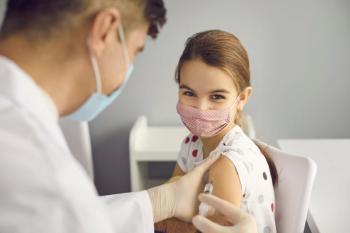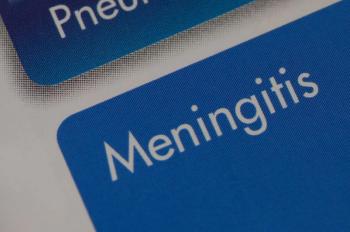
Pharmacists on the frontline of preventive healthcare services
For patients, preventive services are a vital healthcare resource. For the healthcare delivery system, they produce cost savings. Pharmacists are a key link.
Paria ZadehClinical preventive services, which include primary and secondary prevention, are essential to maintaining quality healthcare in the United States.1 Lack of preventive healthcare can result in unmet health needs, delays in delivery of appropriate care, and hospitalizations that otherwise might have been prevented. This creates a cost burden for patients, the healthcare system, and society as a whole.
Barriers to consistent provision of these vital services throughout the U.S. healthcare system limit patients’ use of preventive services and their ability to receive optimal preventive care. By helping patients to overcome these barriers, pharmacists can make significant contributions to decreased costs, expanded rates of patient access to preventive services, and improvement in overall patient health.
Disparities
Healthy People 2020 defines a health disparity as “a particular type of health difference that is closely linked with social, economic, and/or environmental disadvantage.”3 Many dimensions of health disparity exist in the United States. Patients adversely affected by health disparities include those who experience disproportionately greater obstacles to optimal health because of racial or ethnic background, sex, socioeconomic status, or other characteristics linked to poorer health outcomes.3
Along with individual patients, many of these patient groups also face healthcare disparities. Obstacles to access to and receipt of quality healthcare services result in unbalanced provision of care that limits patients’ health outcomes.4,5 Affected patient groups can also include those defined by religion, sexual orientation, gender identity, language, education, and geographic location.4 Healthy People 2020, a national initiative, has set goals to eliminate disparities, achieve health equity, and improve the health of all patient groups.3
Insurance
Disparities in socioeconomic status, poverty in particular, prominently affect insurance coverage.
Patients with health insurance are more likely to have a primary care provider (PCP) and to receive preventive care, and are twice as likely to receive a routine check-up.6 However, nearly 13% of the U.S. population remains uninsured.7
Many patients living below the federal poverty level cannot afford commercial health insurance. Patients who are uninsured are less likely to receive medical care, including preventive care, and they are more likely to have poor health status and to die early.8-11
In 2013, only 33% of uninsured adults underwent a preventive visit in the previous year, compared to 74% of adults with employer coverage and 67% of adults with Medicaid.11
Larger medical bills deter uninsured patients from pursuing preventive healthcare services.12 The health of underinsured patients, whose insurance plans may not cover needed services, also suffers when these patients are not able to afford services outside their insurance coverage.6
Medicare and Medicaid
Expansion of Medicare and Medicaid services and the implementation of the Affordable Care Act (ACA) have advanced efforts to reduce healthcare disparities and have introduced millions of U.S. patients to affordable healthcare.5,12
However, poor health literacy remains common, limiting use of preventive care services by many patient groups and consequently their health outcomes.
Even among privately insured patients, many lack a usual source of healthcare or report difficulty in obtaining care because of financial constraints or insurance problems.6
Pharmacy support
Pharmacists can play a meaningful role in alleviating healthcare disparities that result in limited use of preventive care services.
Pharmacists can help patients find more affordable medications through discount cards and prescription savings plans. When it is appropriate to do so, they also can switch branded medications to generic equivalents, and for patients with commercial or federally funded insurance coverage, they can substitute medications on the insurance formulary.
These efforts can reduce unnecessary patient spending on medications, enabling patients to use at least some of their limited funds on checkups, primary care visits, and preventive care services. Pharmacists also can help defray the costs of preventive health services through provision of free health screenings (discussed below).
Pharmacists also may assist patients who face language barriers or who come from diverse cultural backgrounds through provision of oral and written translation services and the practice of culturally sensitive patient care.
Access to care
It is known that patients with a usual and ongoing source of care have lower healthcare costs and better health outcomes.6,13,14 Having a PCP increases the likelihood that patients will receive appropriate medical care, as these providers can offer continuous care and preventive services.
The number of U.S. medical students pursuing primary care has decreased, however, resulting in a shortage of PCPs that is projected to reach 20,400 by 2020.12,15,16 A goal of Healthy People 2020 in its campaign for improved national health is an increase in the number of practicing PCPs.12
Patients in rural areas are disproportionately affected by limited access to preventive services. Compared to urban residents, rural residents have a lower per capita income and a greater proportion lack health insurance.
The aim of the ACA is to increase insurance coverage and expand preventive services with no cost-sharing by participants. However, even with increased insurance coverage, rural residents face the issue of limited access to providers. While there is a shortage of PCPs throughout the country, rural Americans are the hardest hit. Only approximately 10% of physicians practice in rural areas, where nearly 20% of Americans reside.17,18
Pharmacist interventions
Pharmacists can offset some aspects of limited access to preventive services. In the community setting, pharmacists can offer and promote health screenings, such as blood glucose and blood pressure evaluations to assess patients’ diabetes and hypertension risks.
For patients deemed not at risk, pharmacists can provide patient-friendly education and materials that outline ways to reduce the risk of developing these costly diseases. Because pharmacists are among the healthcare professionals that patients visit most frequently, they can play a key role in educating patients on the importance of preventive care services.
Pharmacists can also use their knowledge of clinical services to recommend preventive care to patients on the basis of their age, sex, and other precipitating risk factors.
The Agency for Healthcare Research and Quality, in collaboration with the U.S. Preventive Services Task Force (USPSTF), has created a guide to clinical preventive services as a reference for clinicians. The guide includes evidence-based USPSTF recommendations on screening, counseling, and preventive medication therapies, organized by disease state.19
Pharmacists can use this guide to inform and assist patients who may benefit from these services, and the referral process itself may encourage patients to pursue them.
Through health screenings, education on primary prevention strategies, and referrals for preventive care services, pharmacists can improve the accessibility of preventive services to the community.
A growing role
Preventive care and early diagnosis reduce costs to patients and the healthcare system, and they can improve patients' health and quality of life.
As legislative efforts to grant pharmacists provider status move forward, pharmacists are better positioned than ever to improve the health of patients through promotion and provision of preventive care services.
References available online at drugtopics.com.
Paria Sanaty Zadeh is a 2017 PharmD candidate at University of Wisconsin-Madison School of Pharmacy. Contact her at karbassi2@wisc.edu.
References
1. Rose DJ, Lantz PM, House JS, et al. US Task Force: Healthcare access and the use of clinical preventive services. http://www.uspreventiveservicestaskforce.org/uspstf08/methods/procmanual.htm. August 2011. Accessed May 2, 2015.
2. Agency for Healthcare Research and Quality. National healthcare disparities report 2008, Chapter 3: Access to healthcare. http://www.ahrq.gov/qual/nhdr08/Chap3.htm. March 2009. Accessed May 2, 2015.
3. Healthy People 2020. Disparities. http://www.healthypeople.gov/2020/about/foundation-health-measures/Disparities. Accessed May 2, 2015.
4. Agency for Healthcare Research and Quality. Disparities in healthcare quality. http://www.ahrq.gov/research/findings/nhqrdr/nhqrdr10/minority.html. October 2014. Accessed May 2, 2015.
5. 1. Kaiser Family Foundation. Disparities in health and healthcare. http://kff.org/disparities-policy/issue-brief/disparities-in-health-and-health-care-five-key-questions-and-answers. November 30, 2012. Accessed May 2, 2015.
2. U.S. Department of Health and Human Services, Office of Disease Prevention and Health Promotion. Healthy People 2010. http://www.healthequityks.org/download/Hllthy_People_2010_Improving_Health.pdf. Accessed May 2, 2015.
3. Gallup. In U.S., uninsured rate sinks to 12.9%. http://www.gallup.com/poll/180425/uninsured-rate-sinks.aspx. Accessed May 3, 2015.
4. Hadley J. Insurance coverage, medical care use, and short-term health changes following an unintentional injury or the onset of a chronic condition. JAMA. 2007;297(10):1073–1084.
5. Insuring America's health: Principles and recommendations. Acad Emerg Med. 2004;11(4):418–422.
6. Durham J, Owen P, Bender B, et al. Self-assessed health status and selected behavioral risk factors among persons with and without healthcare coverage in the United States from 1994 through 1995. MMWR. 1998 Mar;13;47(9):176–180.
7. Kaiser Family Foundation. Key facts about the uninsured population. kff.org/uninsured/fact-sheet/key-facts-about-the-uninsured-population/. Accessed May 3, 2015.
8. Healthy People 2020. Access to health services. http://www.healthypeople.gov/2020/topics-objectives/topic/Access-to-Health-Services. Accessed May 2, 2015.
9. Starfield B, Shi L. The medical home, access to care, and insurance. Pediatrics. 2004;113(5 suppl):1493–1498.
10. De Maeseneer JM, De Prins L, Gosset C, et al. Provider continuity in family medicine: Does it make a difference for total healthcare costs? Ann Fam Med. 2003;1:144–148.
11. Brotherton SE, Rockey PH, Etzel SI. U.S. graduate medical education, 2004-2005: Trends in primary care specialties. JAMA. 2005 Sep 7;294(9):1075–1082.
12. Health Resources and Services Administration. Projecting the supply and demand for primary care practitioners through 2020. http://bhpr.hrsa.gov/healthworkforce/supplydemand/usworkforce/primarycare. Accessed May 2, 2015.
13. US Department of Health and Human Services. The Affordable Care Act: What it means for rural America. http://www.hhs.gov/healthcare/facts/factsheets/2013/09/rural09202013.html. September 20, 2013. Accessed May 2, 2015.
14. National Rural Health Association. What’s different about rural health care? http://www.ruralhealthweb.org/go/left/about-rural-health/what-s-different-about-rural-health-care. Accessed May 2, 2015.
15. Agency for Healthcare Research and Quality. Guide to Clinical Preventive Services 2014. http://www.ahrq.gov/professionals/clinicians-providers/guidelines-recommendations/guide. June 2014. Accessed May 2, 2015.
Newsletter
Pharmacy practice is always changing. Stay ahead of the curve with the Drug Topics newsletter and get the latest drug information, industry trends, and patient care tips.






































































































































